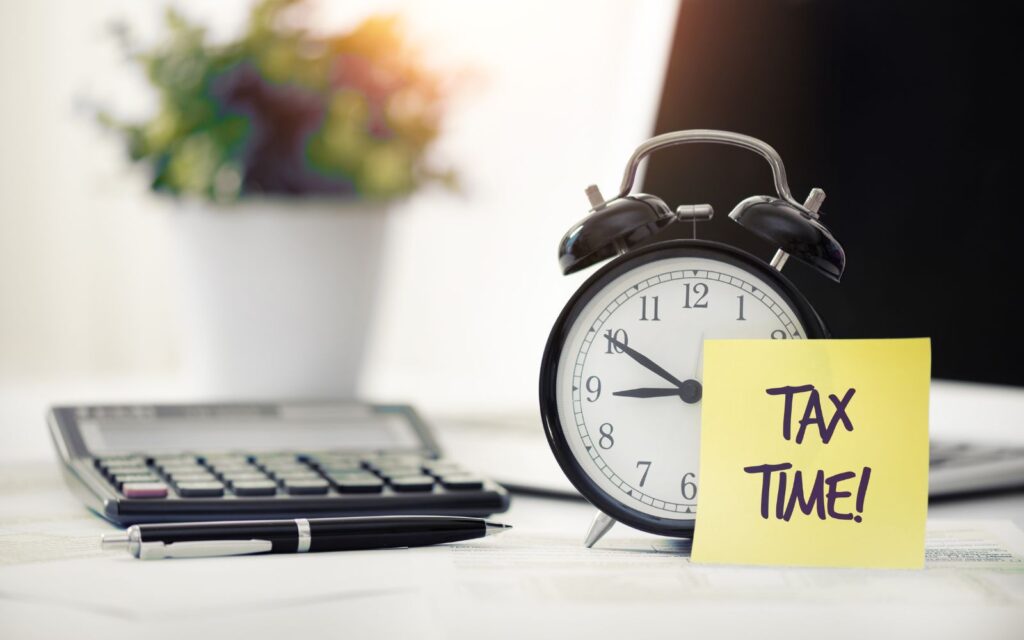Small Business Tax Filing Tips With CRA

A featured list of the top small business tax filing tips from our accountants you wish somebody would’ve told you sooner.
Table of Contents
Filing taxes as a small business owner in Canada can be overwhelming, especially if you’re juggling operations, clients, and compliance responsibilities all at once. With various deadlines, forms, deductions, and CRA expectations to consider, it’s no wonder tax season can be stressful.
But here’s the good news: with the right knowledge and preparation, tax filing doesn’t have to be a headache.
In this guide, we’ll walk you through actionable tips and important insights to make your small business tax filing process smoother, more accurate, and potentially more profitable.
What is required for small business tax filing with the CRA?
To file small business taxes with the CRA (Canada Revenue Agency), there are several key requirements every business owner must meet.
These requirements vary depending on the type and structure of the business but generally include registration, accurate record-keeping, tax return preparation, meeting deadlines, and remitting any amounts owing.
Below is a detailed breakdown of what is required for small business tax filing with the CRA:
Register Your Business
Before filing taxes, your business must be properly registered, depending on your province and structure (sole proprietorship, partnership, corporation).
Obtain a Business Number (BN)
Issued by the CRA, your BN is a unique identifier used for all federal tax matters, including:
Corporate Income Tax
GST/HST
Payroll (if you have employees)
Import/Export accounts
You can register for a BN online through the CRA Business Registration Online (BRO) portal.
Determine Your Business Structure and Tax Obligations
Your business structure determines how and what you file:
Your business structure determines how and what you file:
| Business Type | Filing Requirement |
|---|---|
| Sole Proprietor | File with your personal tax return (T1) using Form T2125 |
| Partnership | Each partner files their share on Form T2125; large partnerships may file a T5013 |
| Corporation | File a T2 Corporation Income Tax Return |
Maintain Proper Books and Records
You are legally required by the CRA to keep complete and accurate records of all financial transactions for at least six years. These records must be available upon request and include:
Sales invoices and receipts
Purchase receipts
Bank and credit card statements
Payroll records
HST/GST collected and paid
Loan and lease agreements
Tip: Use accounting software like QuickBooks, Xero, or Wave to simplify tracking and organize documents digitally.
Understand and Fulfill Tax Filing Requirements
Depending on your business, you may need to file one or more of the following:
Income Tax
Sole Proprietors: Report income on your T1 Personal Income Tax Return using T2125.
Corporations: File a T2 Corporate Tax Return within 6 months after your fiscal year-end.
HST/GST Returns
If your business earns more than $30,000 in revenue in a single calendar quarter or over four consecutive quarters, you’re required to:
- Register for HST/GST
- Collect tax on sales
- File HST/GST returns (monthly, quarterly, or annually depending on revenue and chosen frequency)
- Claim Input Tax Credits (ITCs) for business-related purchases
Payroll Taxes (if you have employees)
If you pay salaries or wages, you must:
Register for a Payroll Program Account
Deduct and remit CPP, EI, and income tax from employee pay
File T4 slips and T4 Summary by the end of February each year
Track and Claim Business Expenses and Tax Credits
The CRA allows you to deduct reasonable business expenses to reduce your taxable income. Common deductible expenses include:
Office supplies
Travel and meals (50% limit applies)
Vehicle use (for business)
Utilities
Internet and phone
Advertising
Salaries and subcontractor payments
You may also be eligible for tax credits, such as:
Investment Tax Credit (ITC)
Scientific Research and Experimental Development (SR&ED)
Apprenticeship Job Creation Credit
Meet All Filing Deadlines
Missing tax deadlines can lead to penalties and interest charges. Key CRA filing deadlines include:
| Tax Type | Deadline |
|---|---|
| T1 (Sole Proprietors) | June 15 (but taxes owed are due by April 30) |
| T2 (Corporations) | 6 months after fiscal year-end |
| HST/GST Returns | Monthly, Quarterly, or Annually (based on election or CRA-assigned frequency) |
| T4/T5 Slips | February 28 or 29 (leap year) |
Use CRA Tools and Portals
CRA provides several online platforms to assist with filing:
My Business Account – Secure access to your tax accounts
Represent a Client – For authorized representatives like accountants
NETFILE and EFILE – Electronic filing services
CRA Mobile Apps – Access info on the go
These services allow you to:
View account balances
File returns and make payments
Communicate securely with the CRA
Access past notices and documents
Make Tax Payments
If you owe money after filing, you can pay via:
Online banking
CRA My Payment
Pre-authorized debit
Mail (cheque)
Third-party services like PaySimply
Avoid late payments to reduce interest charges.
Prepare for CRA Audits and Reviews
Even if you file correctly, the CRA may request a review or conduct an audit. To be ready:
Keep all source documents and receipts
Use separate business and personal accounts
Make sure deductions and claims are properly supported
Respond promptly to CRA correspondence
Consider Hiring a Tax Professional
While many business owners can manage taxes themselves using tax software, consider hiring an accountant or tax advisor if:
You have multiple income streams or years of back taxes
Your business is incorporated
You’re unsure about deductions or tax rules
You’ve received a CRA notice or audit request
Get an all-in-one small business tax filing support package
Sansar Solutions offers a flat-rate fee to support you to stay compliant with the CRA.
What is the $500,000 small business limit?
The $500,000 small business limit refers to the maximum amount of active business income that a Canadian-controlled private corporation (CCPC) can earn each year and still qualify for the federal small business tax rate.
This limit is set by the Canada Revenue Agency (CRA) and is a key component of the Small Business Deduction (SBD).
The Small Business Deduction is a federal tax incentive that reduces the corporate income tax rate on the first $500,000 of active business income earned in Canada by a CCPC.
Regular federal corporate tax rate: ~15%
Small business tax rate (with SBD): ~9%
This means eligible corporations pay significantly lower tax on their first $500,000 of income.
Who Qualifies for the $500,000 Limit?
To qualify for the full small business limit, your corporation must:
Be a Canadian-controlled private corporation (CCPC).
Earn active business income (not investment income or capital gains).
Not exceed certain thresholds related to taxable capital (explained below).
Be associated with no other corporations sharing the same limit (see below).
Summary of small business deduction
| Criteria | Small Business Deduction (SBD) Eligibility |
|---|---|
| Max income at lower rate | $500,000 of active business income |
| Entity type | Canadian-controlled private corporation (CCPC) |
| Phased out at | $10–15 million of taxable capital |
| Shared between | Associated corporations |
| Tax savings | Approx. 6% federal rate reduction |







